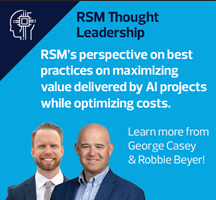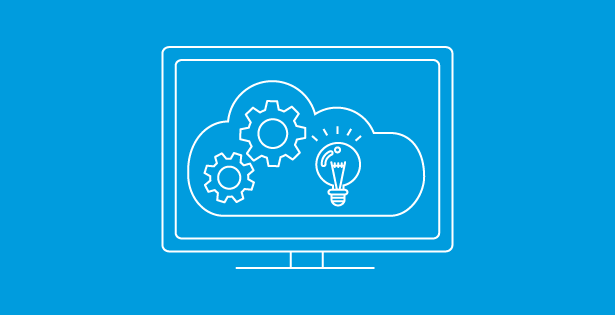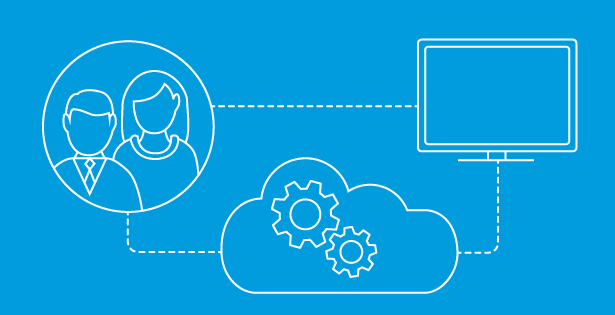Artificial Intelligence (AI) is transforming how organizations operate—but the nonprofit sector has a unique opportunity to lead with purpose. While many for-profit companies are leveraging AI to cut costs and reduce headcount, nonprofits can use AI to augment their teams, automate repetitive tasks, and empower staff to focus on mission-critical work.
Where We Are: AI Adoption in the Nonprofit Sector
AI is no longer a fringe concept in the nonprofit world. According to the 2025 AI Benchmark Report from TechSoup, over 50% of nonprofits are now using or actively exploring AI to increase efficiency, improve fundraising, and enhance service delivery (1)(2). AI is being used to personalize donor engagement, automate grant writing, and analyze impact data—freeing up staff time for strategic initiatives. The emphasis is on responsible and ethical adoption, with resources like the NTEN AI for Nonprofits Resource Hub guiding organizations through implementation (3).
Understanding the Tools: Embedded AI vs. Standalone AI
Nonprofits are integrating AI in two primary ways:
-
Embedded AI in Existing Platforms
- Agentforce by Salesforce: Offers AI-powered donor insights, automated workflows, and predictive analytics directly within nonprofit CRM systems.
- Copilot by Microsoft: Integrates with Microsoft 365 to help nonprofit staff draft emails, summarize documents, and automate administrative tasks—right within the tools they already use.
- Intacct and NetSuite (ERP Systems): These cloud-based ERP platforms are embedding AI to support nonprofit finance and operations teams. Features include automated transaction categorization, anomaly detection in financial data, predictive cash flow modeling, and intelligent alerts for budget variances—helping finance professionals make faster, more informed decisions while reducing manual workload.
-
Standalone AI Applications
These tools can be layered across existing systems and used flexibly across departments:
-
- Copilot Studio / ChatGPT / Claude / Gemini – AI writing and research assistants for drafting grant proposals, summarizing reports, and generating donor communications.
- Tableau with AI Extensions / Fabric + Copilot – For visualizing impact data, automating dashboards, and forecasting trends.
- Tidio / Intercom / Ada – AI chatbots that provide 24/7 support to website visitors, volunteers, or beneficiaries.
- Otter.ai / Fireflies.ai – Meeting intelligence tools that transcribe, summarize, and share meeting notes.
- GrammarlyGO / Jasper / Writer – Content creation tools for newsletters, social media, and donor letters.
These standalone tools offer nonprofits the ability to scale their capabilities without needing to overhaul their tech stack.
A Simple Way to Think About Embedded vs Standalone
If you’re new to AI or technology, think of embedded AI as the smart assistant already living inside the tools you use every day—like Outlook, Excel, or your donor database. You don’t need to install anything new or learn a whole new system. It’s like having a helpful coworker quietly working behind the scenes.
Standalone AI tools, on the other hand, are like hiring a specialist. You can use them when you need extra help—whether it’s writing a grant, analyzing data, or answering questions on your website. They’re flexible, often free or low-cost, and don’t require you to change your existing systems.
Start small: Try using AI to summarize a meeting, draft a donor thank-you note, or organize your budget. You don’t need to be tech-savvy—just curious.
Understanding Internal vs. External AI Agents in Nonprofits
There are several types of AI you may be familiar with.
- Bots follow pre-defined rules to respond to simple conversations.
- AI Assistants can assist with tasks and respond to requests or prompts, but are targeted towards recommendations and simple tasks.
- AI Agents are autonomous, proactive and can perform complex, multi-step actions.
Whether AI agents are ready-made or custom built within your applications, they can be powerful boosts to your productivity and can greatly improve the abilities of resource-strapped teams to meet their constituents needs.
As nonprofits begin to deploy AI agents, it’s important to distinguish between those designed for internal use and those built for external engagement. Both serve critical roles—but their design, data access, and user experience goals differ.
Internal AI Agents
These agents are designed to support staff and streamline operations behind the scenes. As stated, they often work within systems like Salesforce, Microsoft 365, or ERP platforms.
Examples include:
- Grant Assistant Agents: Summarize RFPs, draft proposals, and track deadlines for grant managers.
- Finance Agents: Reconcile transactions, flag anomalies, and forecast budgets.
- Meeting Summary Agents: Transcribe and summarize internal meetings, generating action items automatically.
- Donor Insights Agents: Surface giving trends and recommend next-best actions for development teams.
- HR Agents: Automate onboarding workflows, answer employee policy questions, and assist with benefits navigation.
- IT Helpdesk Agents: Provide instant support for common tech issues, reset passwords, and triage tickets to the right support tier.
Key Benefits:
- Boost staff productivity.
- Reduce administrative burden.
- Improve decision-making with real-time insights.
- Enhance collaboration across departments.
- Increased employee satisfaction.
External-Facing AI Agents
These agents interact directly with constituents, donors, volunteers, or community members—often through websites, chatbots, or messaging platforms.
Examples include:
- Constituent Support Agents: Answer FAQs, provide program information, or help users navigate services.
- Volunteer Matching Agents: Recommend opportunities based on interests, skills, and availability.
- Donor Engagement Agents: Personalize outreach, send thank-you messages, and suggest giving options.
Key Benefits:
- Provide 24/7 support and responsiveness.
- Improve user experience and accessibility.
- Scale outreach without increasing staff load.
- Strengthen relationships with supporters and beneficiaries.
Design Considerations:
- Internal agents often require access to sensitive organizational data and must be integrated with secure systems.
- External agents must prioritize user privacy, accessibility, accuracy, and clear communication—often with multilingual or mobile-friendly capabilities.
By deploying both types of agents strategically, nonprofits can create a more responsive, efficient, and mission-aligned organization—inside and out.
The Vision: A Fully Staffed Team—With AI Agents
Imagine a nonprofit where every staff member is supported by an AI “colleague”:
- Fundraisers use AI to draft personalized appeals and predict donor behavior.
- Program Managers rely on AI to summarize reports and analyze outcomes.
- Communications Teams use AI to generate content and manage social media.
- Events Managers use AI to coordinate logistics, generate promotional materials, and automate attendee communications—freeing them to focus on experience and engagement.
- Grant Managers use AI to identify funding opportunities, draft proposals, and track reporting deadlines—reducing administrative load and increasing win rates.
- Finance Professionals use AI to reconcile transactions, forecast budgets, and generate financial reports—improving accuracy and freeing time for strategic planning.

Solutions like Agentforce and Copilot are already enabling this vision, helping nonprofits streamline operations and deepen engagement.
For nonprofits, this isn’t about replacing people—it’s about amplifying their capacity. AI handles the busywork; humans focus on the heart work. As one nonprofit leader noted at the end of our AI engagements, “AI allows us to add capacity without increasing complexity.”
Why This Matters: Retention, Impact, and Opportunity
Nonprofit professionals are often overextended. By automating repetitive tasks, AI can:
- Reduce burnout and improve job satisfaction.
- Enhance retention by allowing staff to focus on meaningful, mission-aligned work.
- Increase opportunity by making data-driven decisions more accessible across teams.
Unlike the for-profit sector, where AI is often tied to workforce reduction, nonprofits can position AI as a capacity-building ally—one that strengthens teams and deepens impact.
Leading with Intention
Executive leaders have a chance to model a different kind of AI adoption—one rooted in values, equity, and human-centered design. By embracing AI as a teammate, not a threat, nonprofits can build stronger, more resilient organizations ready to meet the challenges of tomorrow.
Just Getting Started? RSM Can Help
If your organization is just beginning its AI journey, RSM is here to help you take the first step with confidence. Our nonprofit-focused AI services are designed to meet you where you are and scale with your mission. We offer:
- AI Readiness Assessments – Evaluate your current systems, data, and workflows to identify where AI can deliver the most value.
- Use Case Workshops – Collaborate with your team to define practical, mission-aligned AI applications across fundraising, finance, programs, and operations.
- Implementation Support – From selecting the right tools to integrating them into your existing platforms, we help you move from idea to impact.
- Training & Change Management – Equip your staff with the knowledge and confidence to work alongside AI tools effectively and ethically.
Let’s explore how AI can become a trusted teammate in your mission. Reach out to me, Ron Wille (ron.wille@rsmus.com) or visit rsmus.com to learn more.
Citations
- The State of AI in Nonprofits: 2025 Benchmark Report on Adoption, Impact, and Trends
- What AI Means for Nonprofits in 2025: Insights from the AI Benchmark Report
- AI For Nonprofits Resource Hub | NTEN

 RSMUS.com
RSMUS.com


